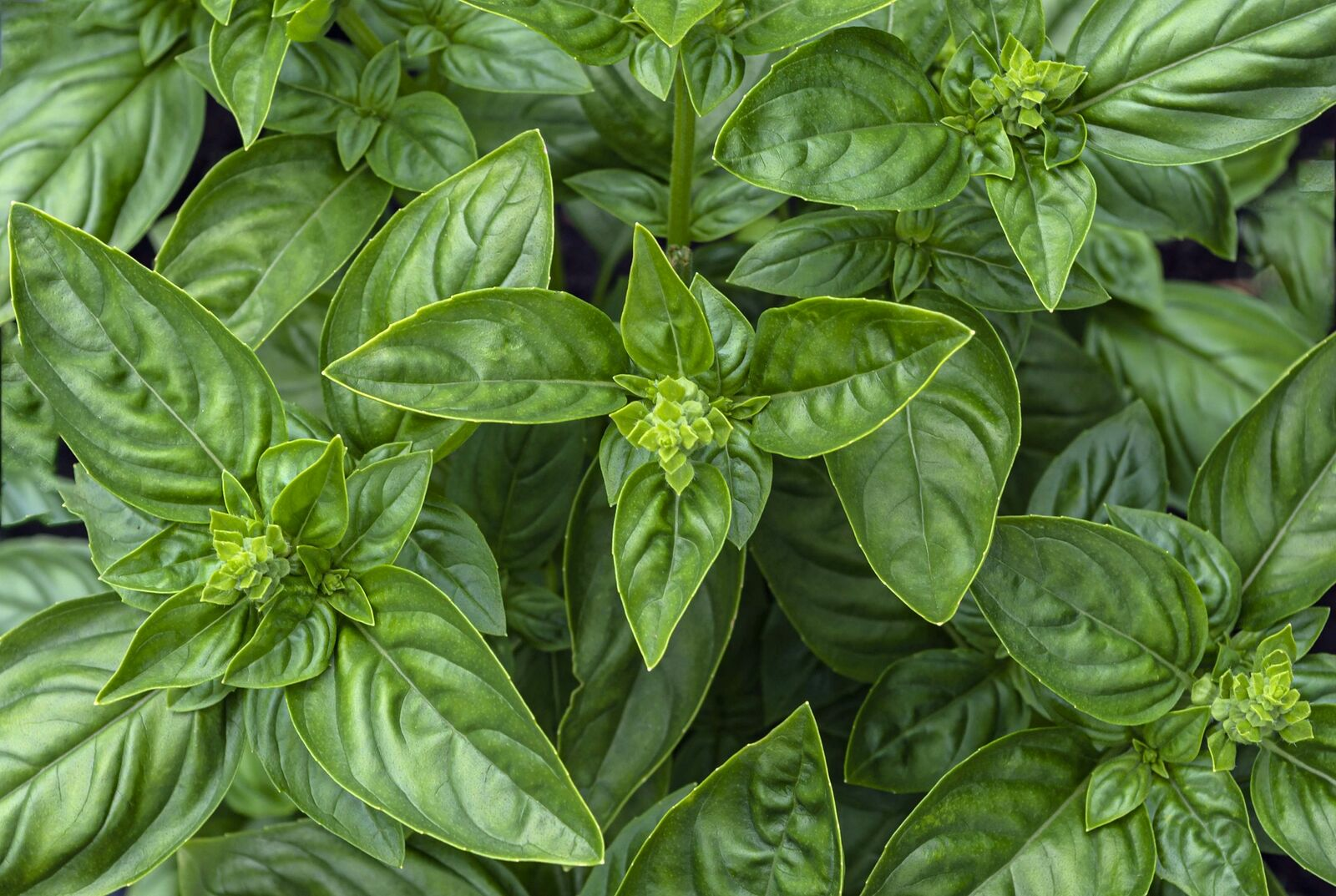
Caring for Basil & How to Repot Basil From the Supermarket
With the right care, your basil will reward you with aromatic leaves for cooking or drying. We give you tips on watering, fertilizing and cutting basil. We also explain how to care for and propagate basil from the supermarket. You can easily grow basil seedlings yourself.
This Article Contains:
- Planting Basil: What You Need to Know
- Care For Basil Correctly: Tips for Watering, Fertilizing & Cutting
- Water the Basil Plant
- Fertilizing Basil
- Cutting & Harvesting Basil Correctly
- Propagate & Grow Basil From Cuttings
- How to Repot Basil From the Supermarket?
- Frequently Asked Questions for Caring for Basil
Quick Overview
How Do I Care for Basil?
- Location: sheltered, sunny and warm
- Soil: loose, humus-rich soil is best
- Temperature: the herb dies below 7 ° C/44.6 ° F
- Nutrient requirements: light feeder, no additional fertilization required
- Water requirement: high
Watering Basil Correctly - Instructions
- Water in the evening or early in the morning
- Basil does not like waterlogging!
- Water from below in the pot if possible
How Often to Water Basil?
- Water moderately every day to prevent waterlogging and mold growth
Planting Basil: What You Need to Know
Basil (Ocimum basilicum) belongs to the Lamiaceae family. The herb likes it warm and sunny. It is therefore not hardy and only grows as an annual in our latitudes. For perennial cultivation, you need to bring the herb inside for the winter. Otherwise, you will have to sow your basil again every year. In addition, not every Basil Variety is perennial. If you want to overwinter your basil and grow it as a perennial, you should bear this in mind when choosing the variety.
Basil is not only a very healthy plant for humans (it is not for nothing that basil is a valued medicinal plant in India), but also a good partner in a mixed culture. The herb keeps whitefly away from your bed and can prevent Mildew. This is why basil and tomatoes are such a good mixed crop, as tomatoes are often affected by mildew. You can find out more about the Effect of Herbs in a Mixed Crop here in the article.
The Right Location and Temperature
For basil plants, choose a sheltered and sunny location. The soil should be loose and rich in humus. All in all, however, basil is not fussy and thrives in almost any location - even in a pot on the balcony. The right temperatures are more important: below 12 ° C/53.6 ° F, growth stops and the basil gets "cold feet". If temperatures fall further to 7 ° C/44 ° F, basil dies.
Basil and Sun
As already mentioned, basil does well in the sun, but the plants often lack water at midday, especially on warm days. You can therefore also grow basil in partial shade, for example between tomatoes, where the basil plant is at least partially shaded.
Sun and suitable temperatures are essential for basil plants to grow well. So if you have to deal with a cold, wet and rainy gardening season, it's probably not your fault if the herb doesn't grow in the garden.
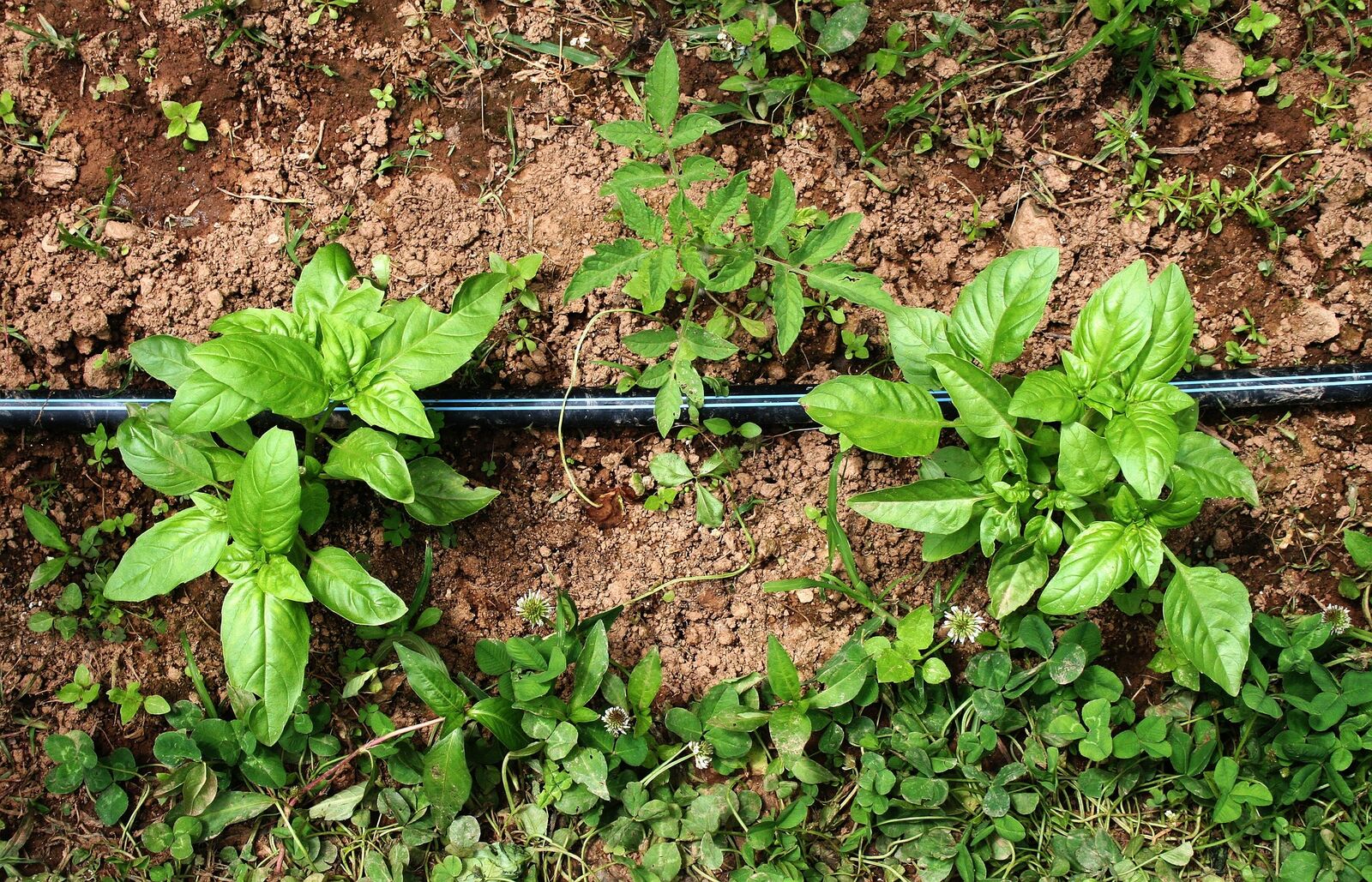
Care For Basil Correctly: Tips for Watering, Fertilizing & Cutting
There is not much you need to consider when caring for basil. If you follow the tips for watering and fertilizing basil correctly, you should be rewarded with healthy basil plants. There are also a few tricks for cutting basil that will allow you to harvest the herb several times.

Want to Know More About Diffrent Basil Varieties?
In our library you will find information on the individual basil varieties with cultivation periods, tips on planting and harvesting. You will also find companion plants to help you plan a mixed crop.
View Library NowWater the Basil Plant
As the tropical herb loves the sun, but has many leaves to supply with moisture, it needs a lot of moisture. So don't forget to water your basil on sunny days. This should preferably not be done in the midday heat, as otherwise your plants will get a "shock" from which they may not be able to recover. It is therefore best to water in the evening so that the water can be absorbed overnight without evaporating too quickly. Even early in the morning, not so much water evaporates on the cooled soil and can be absorbed by the plants. But be careful: too much moisture can lead to mold growth. This can happen quickly, especially if you keep your herb on the windowsill.
Water Basil in the Pot
Water the basil daily so that it is evenly moist. When doing so, follow the rule of thumb for herb pots: the daily water supply should not permanently exceed the maximum amount of 10% of the pot volume. For a standard herb pot with a capacity of 1 L/2.1 pt, this would be approx. 100 ml/0.21 pt of water.
Basil in a pot is best watered from below. If the leaves get wet, the risk of fungal infection increases. The leaves can also burn if the basil plant is placed directly in the sun. Use a pot with a hole at the bottom and a saucer. You can then water daily via the saucer. Take care not to cause waterlogging!
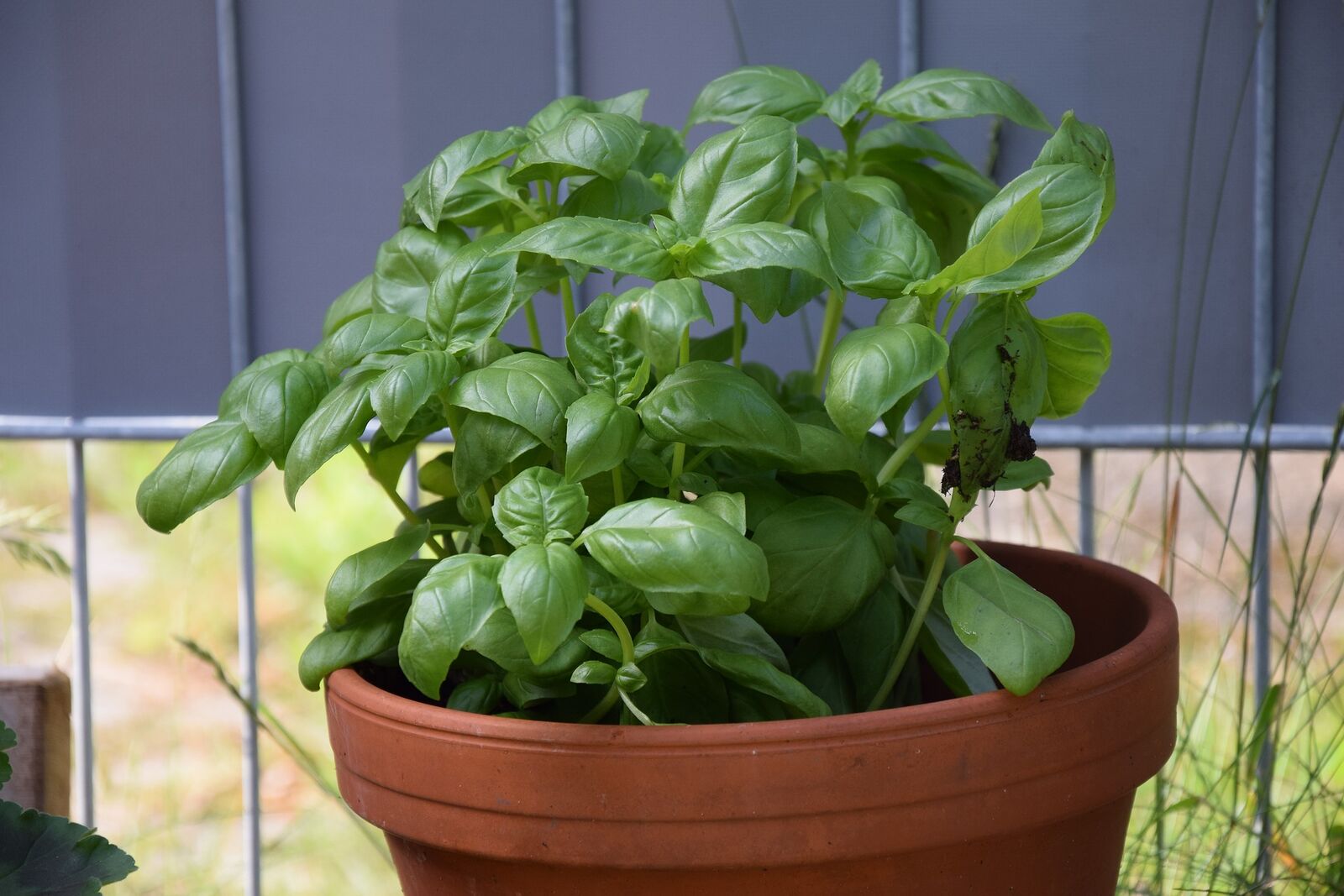
Fertilizing Basil
Fertilization is not a must for basil, as it is a light feeder.However, basil thrives best when the soil is loose and rich in humus. Simply use a little compost, which you can make yourself. Mix in a little sand to prevent waterlogging.
Cutting & Harvesting Basil Correctly
To ensure that basil grows back and you can harvest regularly from a plant, you need to prune your basil correctly. To ensure that there are still enough leaves to sprout again, only cut off the top tips of the shoots. By shoot tips, we really only mean the upper part with about 4 large leaves. Use a sharp knife to damage the plant as little as possible. Then cut off the shoot tips above a leaf axil to make it easier for the plant to sprout. By harvesting regularly, you can delay flowering and harvest fresh basil for longer. You can find out more about Harvesting and Processing Basil in this article.
Propagate & Grow Basil From Cuttings
Once your plant has developed larger shoots, you can cut off 10 - 15 cm/3.9 - 5.9 in shoot tips and remove the leaves from the lower half. Now place the offcuttings in water. If this is kept fresh, small root shoots will form on the plant parts after 1 - 2 weeks. You can plant the cuttings when the root shoots are 3 - 4 cm/1.2 - 1.6 in long.
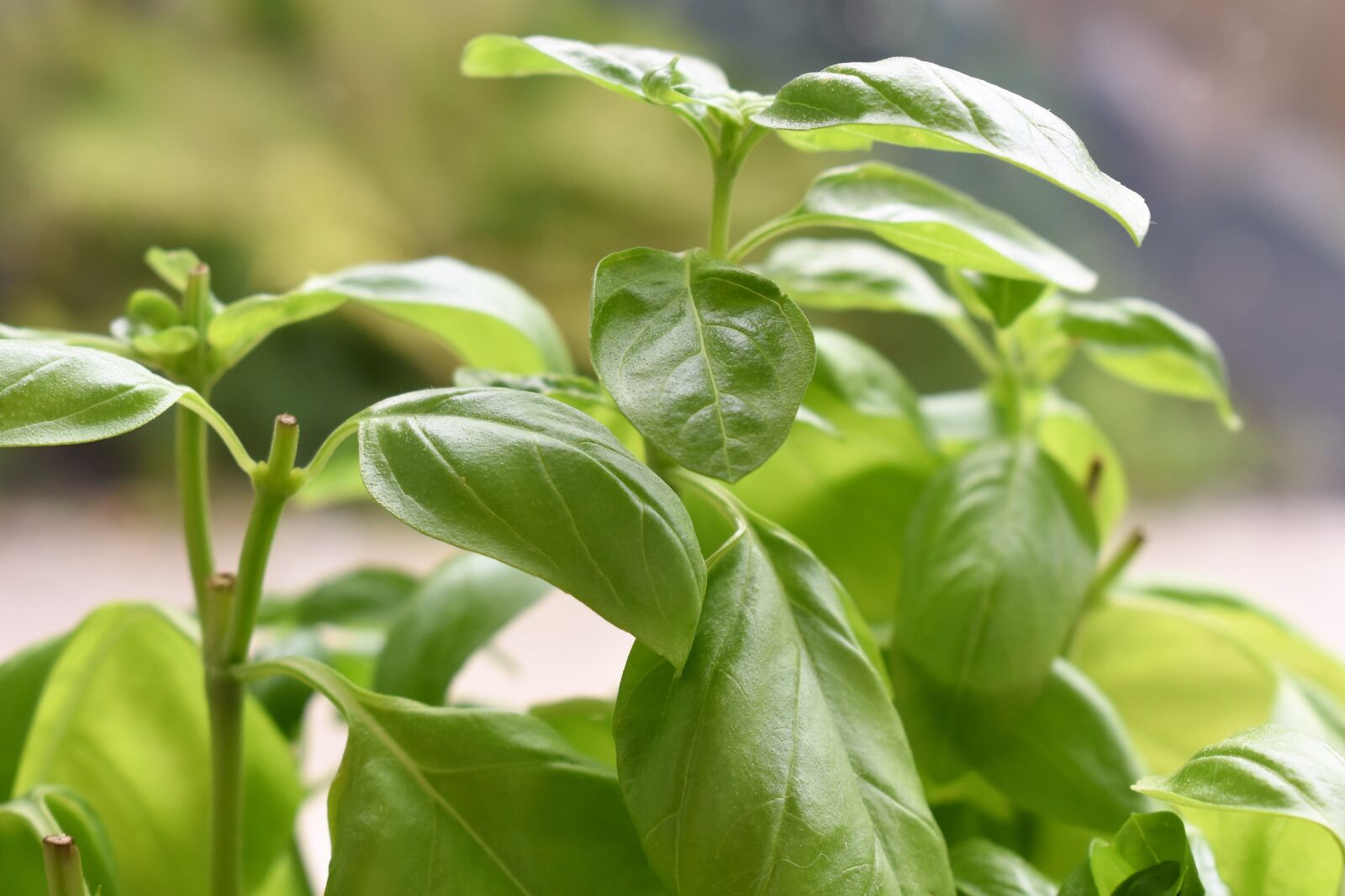
How to Repot Basil From the Supermarket?
We all know the problem: you buy a spice plant from the supermarket and want to use the herb for a long time, but it dies after just a few weeks. Even though you only use a few leaves for your dishes. Surely the basil should recover from this? However, the plants are grown very quickly in greenhouses under optimal conditions and are therefore not particularly robust. They are also usually planted far too close together. Here we show you the best way to care for and propagate your supermarket basil.
How Can Basil Bought in the Supermarket Be Strengthened in a Pot?
If you want your basil from the supermarket to survive in the long term, you should definitely separate and repot it. Only take a quarter of the plants for a pot of the original size. This means that you can grow four basil plants from one supermarket basil. It is best to fill these pots with organic potting soil, as this is somewhat richer in nutrients than herb soil. This provides the small plants with a better supply of nutrients. Water the repotted plants with plenty of water.
Instructions for Repotting Basil:
- Divide the root ball of your plant into 4 parts immediately after purchase. Do this carefully so as not to damage the roots too much.
- Pot up the individual parts with fresh soil in a pot. It is best not to use nutrient-poor herb soil, as the plants need a slightly more nutrient-rich environment for further growth. Organic potting soil is therefore very suitable for basil. The size of the new pot can be the same as the original pot.
- If it is already mid-May, you can also plant the basil outside in a sheltered spot. But be careful: plant the basil in a semi-shady spot first, as the greenhouse plant is not used to full sun. You can also add some compost to the planting hole.
- Water your repotted/planted basil at the beginning. Don't forget to water the thirsty plant regularly.
The basil plants now have more light, space and nutrients at their disposal. In addition, they are much better aerated, which prevents many diseases, such as mold. Give your plant some time to adjust before harvesting leaves from it.
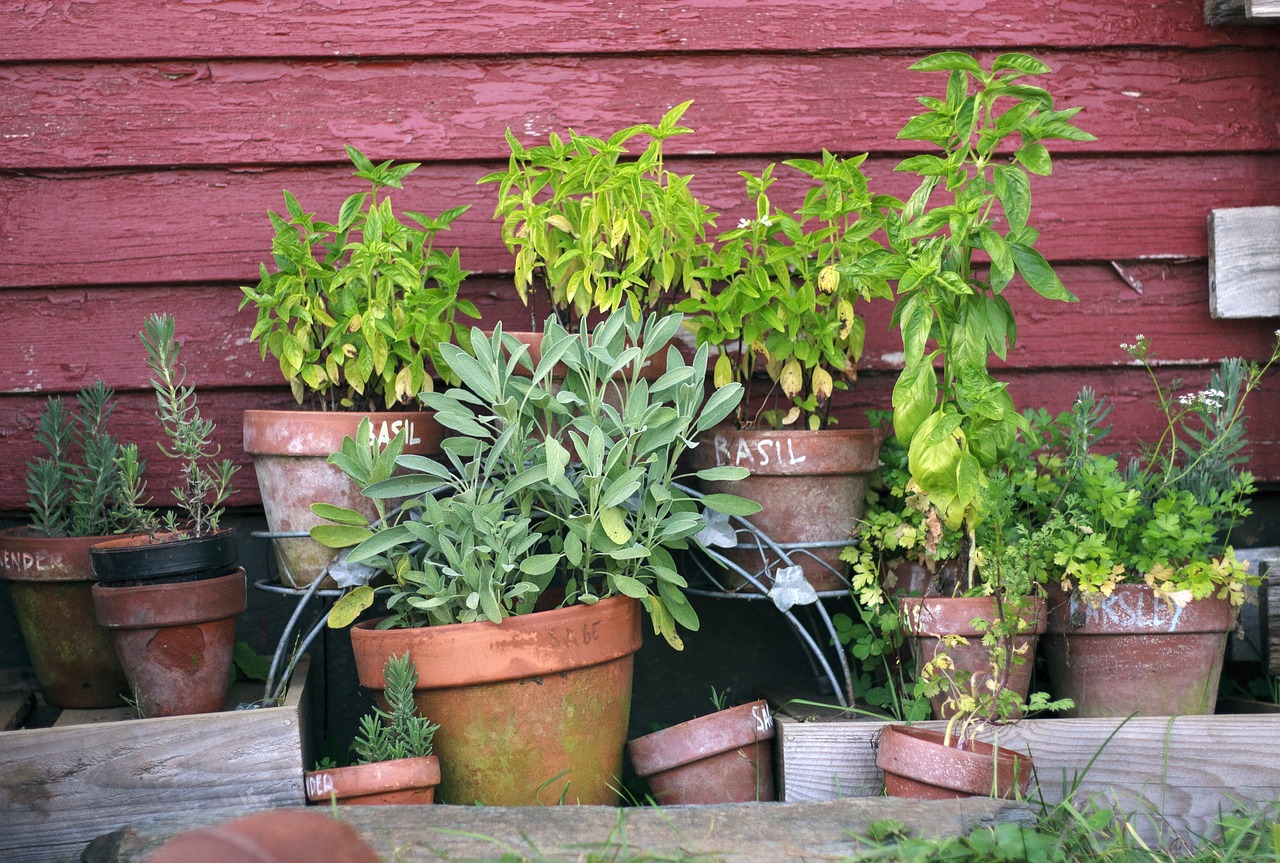
I hope this has whetted your appetite for growing your own basil. If you have any questions or comments, please write to us at magazin@fryd.app.
Would you like to receive helpful gardening tips all year round and plan your own beds in the best possible way? Then register here or download the Fryd app for Android or iOS.
Fryd - your digital bed planner
Cover picture by Jelenajuhnevica on Pixabay.
Isabell
Current Topics in the Community

#red , #tuesday

Liked 1 times
#testpostcount

Dec 2025
Popular Articles

Companion Plants for Carrots: What (Not) to Plant With Carrots

Companion Plants for Celery : What (Not) to Plant With Celery?

Strawberry Types: List of Best Strawberry Varieties

Companion Planting With Strawberries: Companion Plants and Planting Plan

Basil Varieties & Types at a Glance

What to Plant With Cabbage: Good and Bad Companion Plants

Fertilizing Strawberries: Home Remedies & Natural Fertilizers at a Glance

Growing Sweet Potatoes: Tips on Cultivation & Companion Plants

Companion Plants for Kitchen Herbs: Chives, Parsley & Co

What Herbs Can Be Planted Together?
FAQ
How often should basil be watered?
Basil needs regular watering, preferably daily, to keep the soil evenly moist without waterlogging.
How should basil from the supermarket be repotted?
Divide and repot the basil into separate pots with nutrient-rich soil to encourage growth.
Generally, no additional fertilization is required as basil is a light feeder.
Basil can be propagated by cuttings; place offshoots in water until roots form.